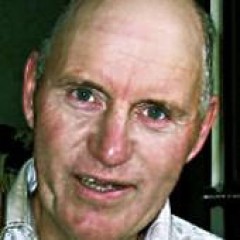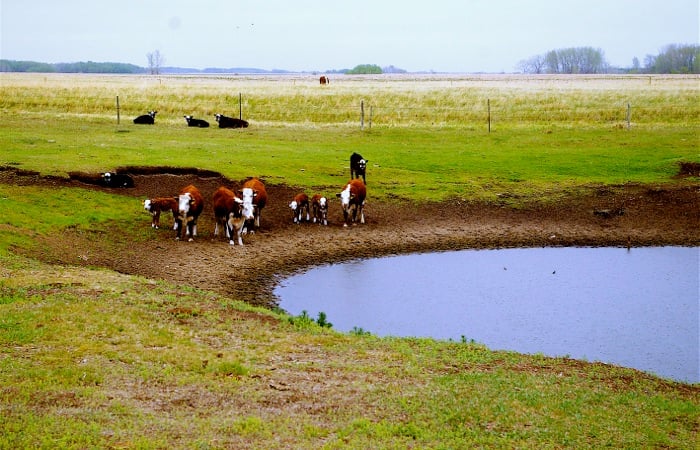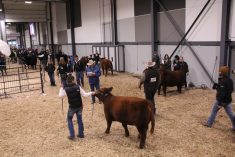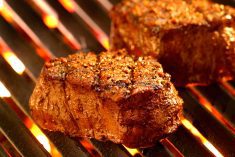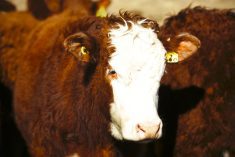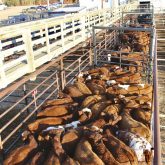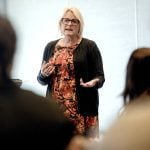For most of us the winter months are the slowest work-wise. This might be an ideal time to do some strategic planning for 2014. Rest assured that thinking and planning will pay more than working. Many jobs can be delegated or hired out. Thinking and planning require that we do the hard work.
One of the tools we use to aid our planning in H M is referred to as the weak link test. The idea comes from imagining that your pickup is stuck. The neighbour shows up with his big four-wheel drive and a rusty old chain. No matter how old or weak the chain; if it breaks, it will only break in one place. The same is true of our businesses. If we are unprofitable or even worse if our business fails, it will be because we are weak in one area. Knowing where we are weak will allow us to take remedial action.
Read Also

Canadian beef genetics worth the miles for international buyers
Isaac Gomez has travelled the world looking for the best in cattle genetics. As a Black Angus breeder and mentor…
There are three basic steps to any business. In agriculture these can be defined as growing, harvesting and marketing.
Growing refers to capturing solar energy. This is the first and the most basic step in agriculture. The question is: Am I capturing adequate solar energy on my land? Solar energy is the basis of all wealth. If we want a profitable and sustainable business it is essential that we capture as much of it as possible.
Capturing solar energy requires a healthy ecosystem. The building blocks are energy flow, water cycle, mineral cycle and succession. All four are closely related.
When we improve or damage one we tend to improve or damage all four at the same time. We want to have a high energy flow. This requires tight plant spacing, wide-leafed plants and a great diversity of plants.
An effective water cycle requires that there is no bare ground and that the soil is porous and high in organic matter. An effective mineral cycle requires that minerals cycle rapidly from the cow pies back into the soil for the next flush of plant growth. This requires soil that is covered and has as many organisms as possible living in it to improve nutrient cycling.
Succession is a natural-occurring process. It implies that one series of plants prepares the way for the next series. Our management can influence this cycle. The goal will be greater plant diversity to provide improved nutrition for our animals and a more stable productive growth.
Harvesting refers to converting what we have produced into something that is salable. In simple terms do we have enough livestock to consume the amount of forage we are producing? For most of us this isn’t a problem as we often tend to run our stocking rate to the maximum. However, I have seen this become a problem when someone does a good job of improving their growing link and then forgets to increase their harvesting link to utilize the extra growth. Other things that would fall in this category would be conception rates, weaning percentage, death loss, low gross profit etc.
Marketing refers to selling what we have produced at a price that allows us to be profitable. Things we might consider here include market information, knowing our cattle, timing of marketing at the calf, yearling or long yearling stage, market flexibility, shrink etc.
More from the Canadian Cattlemen website: Prepare for the unpredictable
Now that we have the three links defined it is essential that we analyze our business and identify our weak link. It is unproductive to concentrate on what we enjoy most or what we do best. We need to strengthen our weak link to make our business profitable and sustainable. This idea has no value unless you apply it to your business.
So stop and reflect: What would benefit your business the most? Would it be: more grass, better product conversion or better marketing? Pick the one you feel is weakest. With the weak link identified you are now ready to move on. Just before we do that, it is important to remember that we need to do this exercise yearly. When you identify the weak link and take action to correct it your weak link will likely change in the next year.
Now that we know our weak link we can use this knowledge to help us spend our money more wisely. We will sort our expenses into three categories based on our weak link.
W: Wealth Generating. These expenses will strengthen our weak link. This money is an investment in our business. The more we spend here the better off we will be.
I: Inescapable. These are expenses that we are required to pay either legally or morally. Think of these as death and taxes. They must be paid and the amount is constant. This will be a set amount of money so we can put that amount aside when we do our planning. We will not spend time trying to reduce these expenses.
M: Maintenance. Theses are all the expenses that are not “W” or “I” expenses. This is where it gets interesting. The question is how can we reduce or eliminate these so we can invest more money in our “W” expenses?
One of the worst things we could do is to reduce all our expenses by an equal percentage.
If growing is our weak link our list of helpful “W” expenses might include: fencing (permanent or temporary), winter feeding on the land (bale grazing), water development etc. If our weak link is harvesting the “W” expenses might include more animals, an extended grazing season, custom grazing etc. If our weak link is marketing “W” expenses might include: purchasing a scale, or investments in better market information and better financial planning, marketing at a different time or selling animals at a different age. Our “I” expenses would likely stay constant even though our weak link changes. “M” expenses would change as our weak link changes.
The weak link test and the sorting of our expenses can help us spend our money more wisely. I wish you success in creating a profitable 2014. Remember it won’t just happen. You need to plan for it. Happy trails.
Don Campbell ranches with his family at Meadow Lake, Sask., and teaches Holistic Management courses. He can be reached at 306-236-6088 or [email protected].

